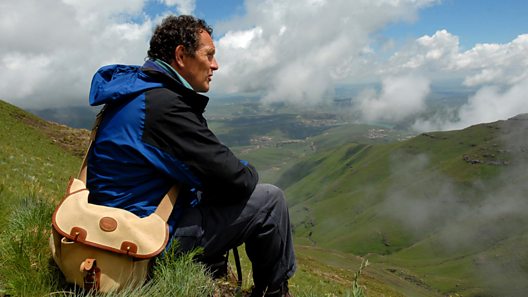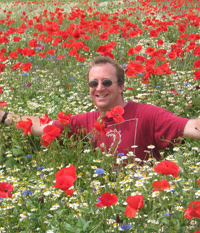 |
| Monty Don, Shared Planet, BBC Radio 4 |
Our environment provides us with amazing resources. As well as the obvious things like food, wood and water, it provides services like pollination, climate regulation and waste decomposition. However we are putting our delicate ecosystem out of balance by destroying habitats, over-exploiting animals and plants, polluting the air and rivers and causing climate change at a rate that hasn’t been seen since the extinction of the dinosaurs.
Last week the Cabot Institute hosted a debate for BBC Radio 4’s Shared Planet programme, asking whether we can better manage resources to live within our planet’s means, or whether there are simply too many of us to co-exist with wildlife.
 |
| Fred Pearce |
Fred Pearce, science and environment writer, was one of the panellists. He argued that nature is dynamic and with better management of the resources we already have, we can reduce our consumption and live within the planet’s ability to recover.
 |
| Kieran Suckling |
Kieran Suckling, Executive Director of the Center for Biological Diversity in Arizona, had a more pessimistic view. He believes that the human population is going to rise to a level far greater than the planet can sustain, and if we do not control our population level we will not be able to prevent ecological destruction on a global scale.
Global Extinctions
We are losing biodiversiy at an unprecedented rate. The 2012 Living Planet Report by the WWF estimated that we lost 28% of global biodiversity between 1970 and 2008. Fred took a more holistic view, that while of course we have a huge effect on the natural environment and should try and minimise damage, nature is resilient and will fight back. Foxes invading urban environments, weeds in a garden and rainforests’ ability to regrow in 15 years show that nature isn’t as fragile as we think. Animals and plants that depend on very specific environments are likely to be more at risk than more generalist species however and Kieran argued that we have an “ethical responsibility” to keep all remaining species alive.
How can we feed everyone sustainably?
 |
Riau deforestation for oil palm plantation
Image by Aidenvironment, 2006 |
Every day around 870 million people do not get enough food. How can we hope to feed a predicted 9.6 billion people by 2050 whilst growing food more sustainably? Suckling described how industrial agricultural practices are highly damaging to the environment, for example pesticides which probably have a severe impact on bees. He argued that organic farms are unlikely to provide enough food for the growing population.
Globally, 19% of forests are protected, but rising demand for fuel and agricultural land means we are losing 80,000 acres of rainforest each day and probably 50,000 species of animals and plants every year. The good news, Pearce said, is that that we already produce enough food to feed the predicted 9 billion people, although we waste enough for 3 billion. Recent reports showed that 15 million tonnes of food is thrown away in the UK each year. He argued that we should be encouraged by the notion that “we can reduce our footprint just by being more economical”. The real challenge is how to make people understand that food waste is both socially and environmentally unethical.
Education
Fred mentioned that overall women are having half the number of children that their mothers had. This is in part thanks to medical advances, meaning that most children will survive to adulthood so fewer births are needed to build a family. It is also an education success story. Both the panellists agreed that “when education and freedom levels rise, the population starts to grow more slowly”. Opportunities for women to educate themselves will be critical in changing gender stereotypes and reducing the numbers of unwanted pregnancies. This is good news for human rights as well as managing our growing population’s impact on the environment.
Economics
The environment provides $33 trillion of benefit to us every year by pollinating crops, purifying water, cycling nutrients and keeping our climate stable. It would cost an estimated $76 billion annually to protect the environment, which is only about 20% of the money spent on soft drinks each year. Fred believes that putting a true price on economic resources and the cost of carbon emissions means that simple economics could solve the problem of environmental degradation by showing businesses that conservation is the less costly option. Kieran disagreed, arguing that both environmental and social problems stem from a capitalist consumer society. As the WWF Living Planet Report stated, “in too many cases, the over-exploitation of resources and damage or destruction of ecosystems are highly profitable for a few stakeholders in the short term”. Businesses and politicians work on too short a time scale to care about the long-term effects of environmental degradation.
So are there too many people for wildlife to thrive?
The debate ventured into the ethical question of whether animals and the environment should have the same right to live as humans. Does sustainable living have to be an “us versus them” question? Fred took a humanist view, but argued that we as a species need the services that nature provides. Kieran argued that we must not simply steal the most resources we can get away with, but live sustainably with other species.
Before the debate I believed that there are too many people on the planet for wildlife to flourish and at the end I would probably say I still felt the same way, however Fred managed to instil a bigger sense of hope in me. If governments really do get their acts together and we as a global population get our wasteful consumerism under control, we can turn the tides and make this a better world for both people and the wildlife we share it with.
If you would like to listen to the Shared Planet programme, it will be aired on BBC Radio 4 on Tuesday 24 December 2013 at 11 am.
This blog is written by Sarah Jose, Biological Sciences, University of BristolYou can follow Sarah on Twitter @JoseSci










